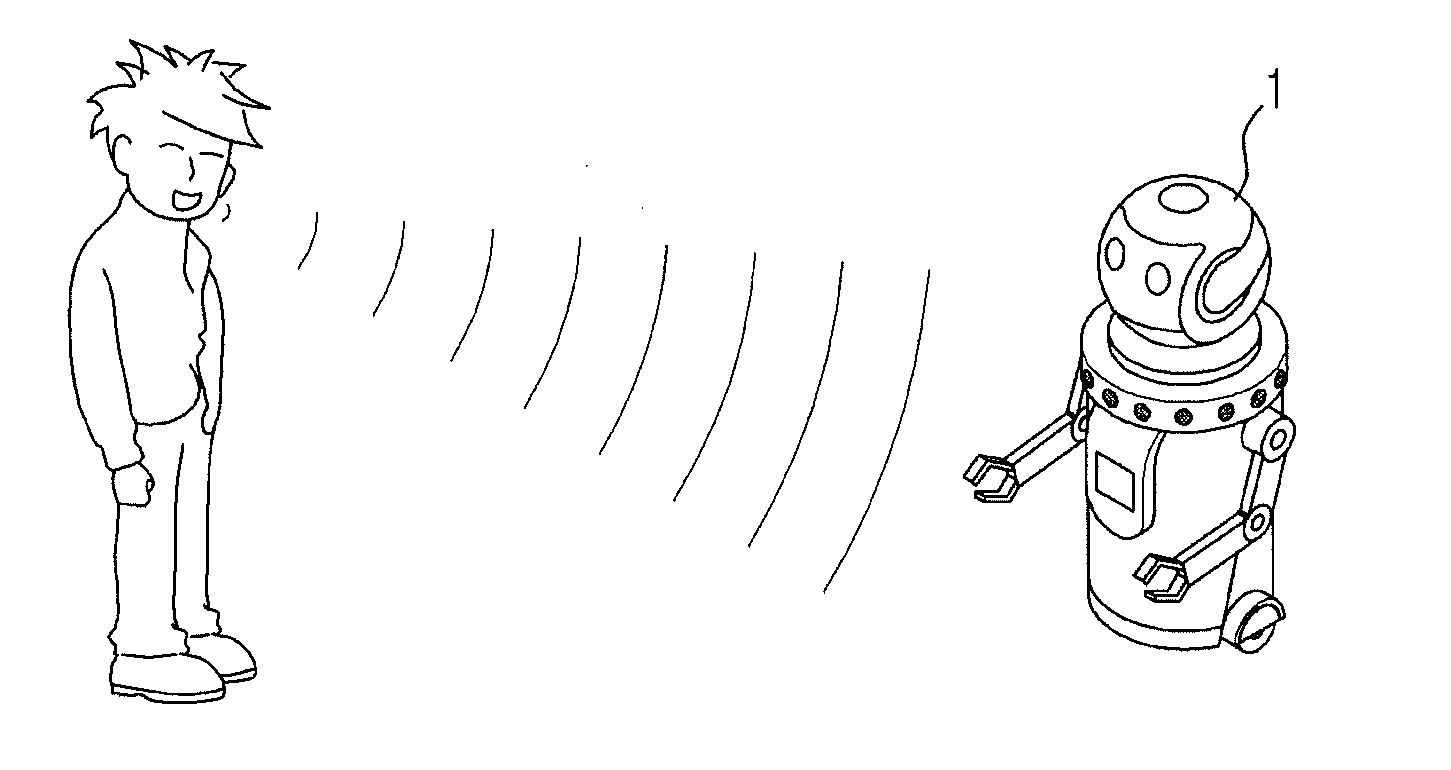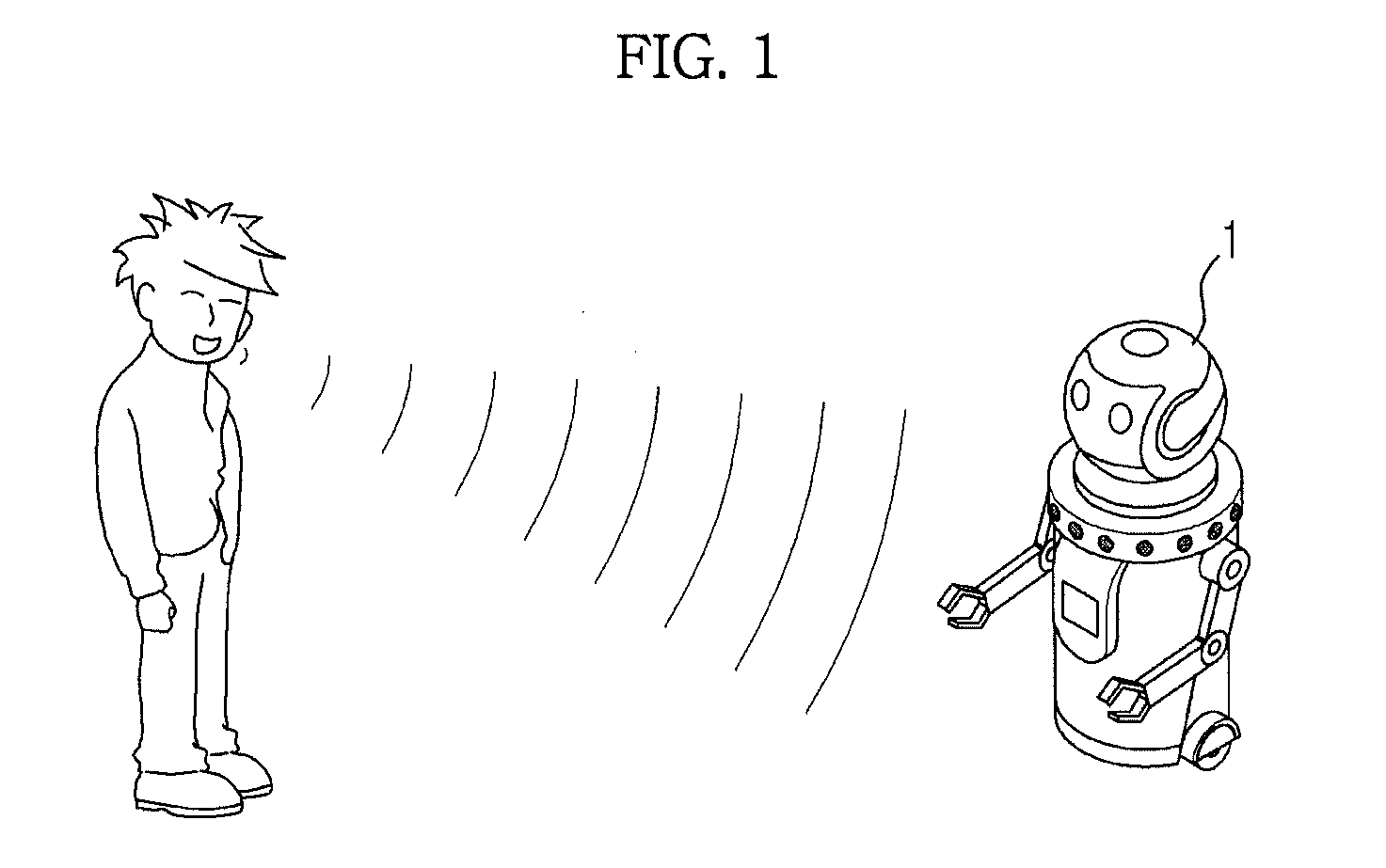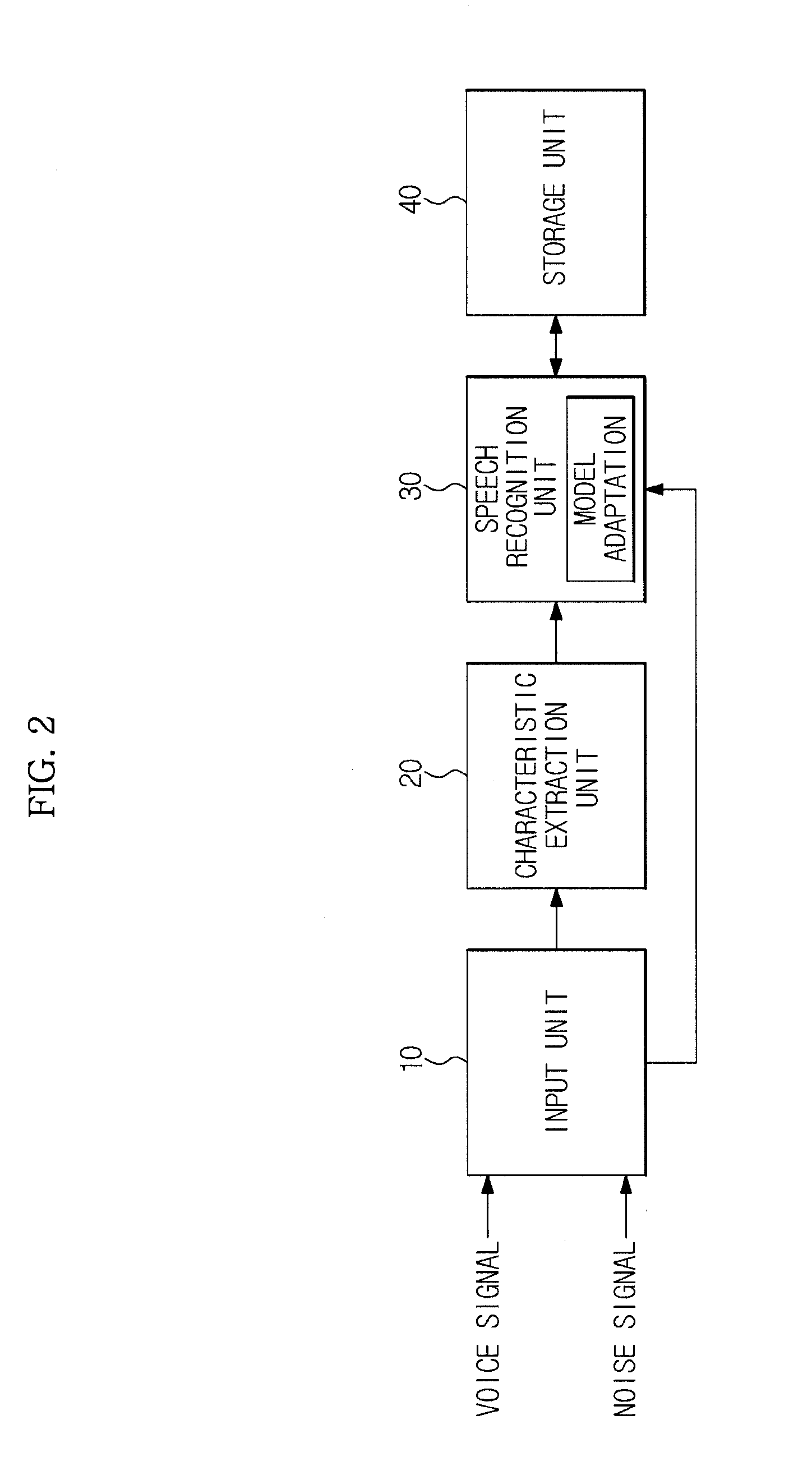Speech recognition method for robot
a robot and speech recognition technology, applied in the field of robot speech recognition, can solve the problems that the speech recognition performance of the conventional speech recognition method is unavoidably restricted, and the performance of the conventional speech recognition technology cannot be guaranteed under an arbitrary environment, so as to increase the speech recognition capability and remove the mismatch
- Summary
- Abstract
- Description
- Claims
- Application Information
AI Technical Summary
Benefits of technology
Problems solved by technology
Method used
Image
Examples
Embodiment Construction
[0035]Reference will now be made in detail to the embodiments, examples of which are illustrated in the accompanying drawings, wherein like reference numerals refer to like elements throughout.
[0036]FIG. 1 is a configuration diagram illustrating a speech recognition apparatus for a robot according to an embodiment.
[0037]Referring to FIG. 1, the speech recognition apparatus for the robot according to an embodiment includes a microphone. If the speech recognition apparatus receives a voice signal from a speaking user of a transmitter of the speech recognition apparatus of the robot, and the voice signal indicates a new noisy environment and a speaker using the model adaptation method, the speech recognition apparatus for the robot recognizes the speaker's voice by executing noisy environment adaptation and speaker adaptation.
[0038]The speech recognition apparatus for the robot generates / stores the acoustic model adapted to noise for each noisy environment, generates / stores the acousti...
PUM
 Login to View More
Login to View More Abstract
Description
Claims
Application Information
 Login to View More
Login to View More - R&D
- Intellectual Property
- Life Sciences
- Materials
- Tech Scout
- Unparalleled Data Quality
- Higher Quality Content
- 60% Fewer Hallucinations
Browse by: Latest US Patents, China's latest patents, Technical Efficacy Thesaurus, Application Domain, Technology Topic, Popular Technical Reports.
© 2025 PatSnap. All rights reserved.Legal|Privacy policy|Modern Slavery Act Transparency Statement|Sitemap|About US| Contact US: help@patsnap.com



